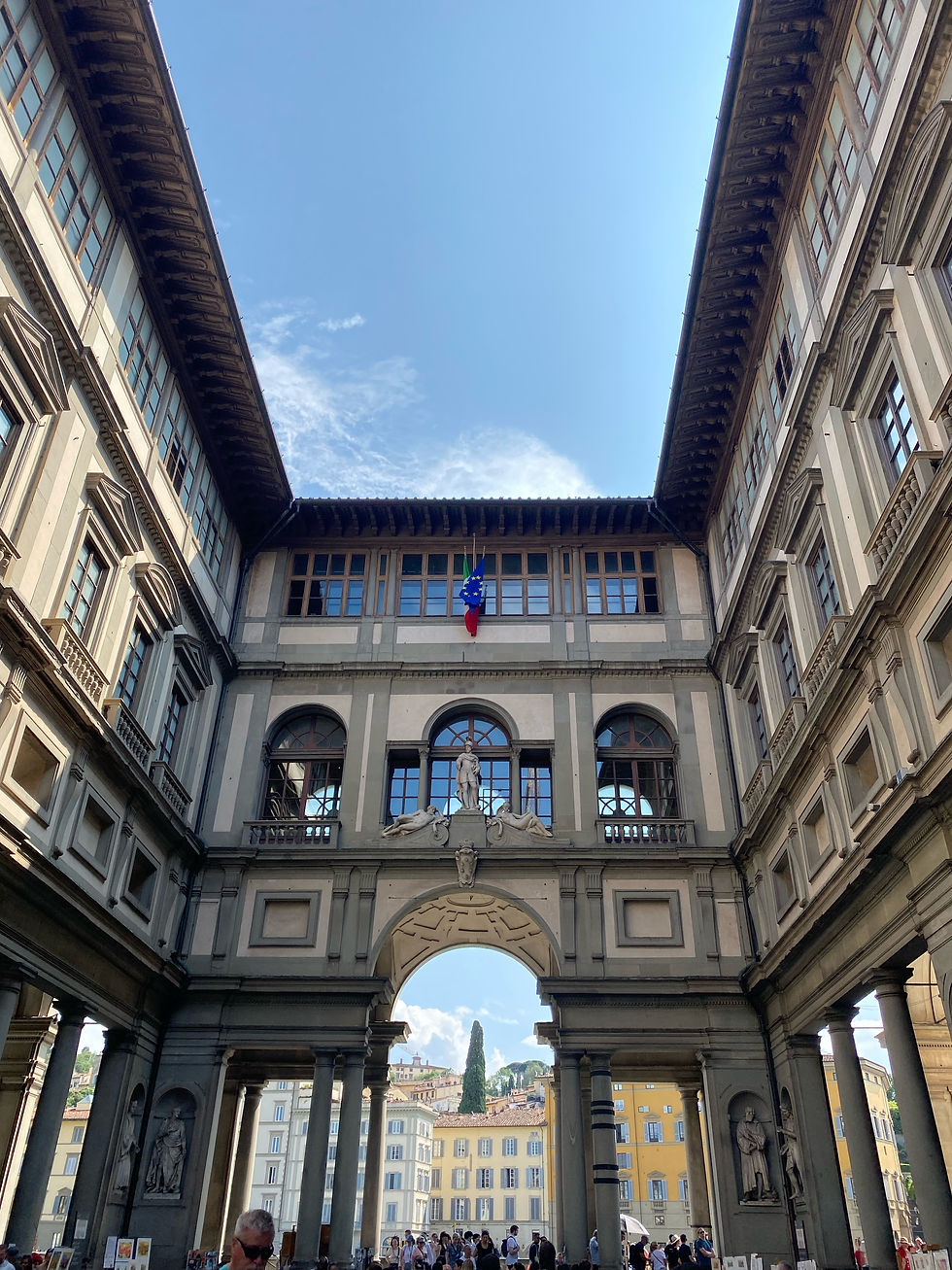Italy's Wonders to the World: ARTchitecture
- Andrea Castiblanco
- May 29, 2023
- 4 min read
Italy is a country renowned for its history, breathtaking landscapes and extraordinary architectural treasures. Among its numerous regions, few can rival the captivating charm and architectural splendor found in Tuscany and the colorful villages Cinque Terre.
From towering cathedrals to medieval fortresses and picturesque coastal villages, Italian architecture is renowned for its magnificent and intricate details that have captivated people for centuries. More than just buildings and structures, these constructions hold historical and cultural value to the Italian people and are seen as a testament to creativity and ingenuity.
Arches
As one delves into the architectural wonders of Tuscany and Cinque Terre, one of the most striking features of Italian architecture is the use of arches.
Arches have been a part of Italian architecture since ancient times, as the Romans were the first to master the construction. The creation of arches revolutionized architectural engineering with the Romans developing the sophisticated construction technique of using a temporary wooden arch to hold stones in place and removing the wood once the central keystone was in place.
Arches are not confined to grand structures alone; they can be found in the charming details of Italy's alleyways, doorways, and windows.
Their ingenious engineering allows for the creation of sturdy, aesthetically pleasing structures, enabling architects to achieve both aesthetic and practicality in their creations. Arches have been incorporated in many Italian buildings and have helped shape the landscape, with a prime example being the Colosseum.

In Italian history, arches hold symbolic and cultural significance as they often served as monumental gateways and, at times, were constructed to celebrate military victories, commemorate historical events, and honor influential figures.
Another fascinating construction in Italian architecture that incorporates the use of arches is the Ponte Vecchio.
Ponte Vecchio
Located in central Florence, Tuscany, the Ponte Vecchio is a medieval stone arch bridge that extends across the Arno River.
The Ponte Vecchio, also known the “Old Bridge” in English, was completed in 1345 by Taddeo Gaddi and is known to be the first segmental arch bridge built in the West.

The Ponte Vecchio consists of three segmental arches supported by stone piers that provide the construction with structural stability and reflects the architectural style of the medieval period.
As one of the most outstanding achievements of Europe’s Middle Ages, the bridge has survived from floods to wars, including the German occupation during World War II.
Nowadays, as one walks across the Ponte Vecchio, there are a variety of shops lined all the way down that sell from jewelry to souvenirs. This array of shops is known as the “Houses of the Bridge,” which have been occupied by artisans and merchants since the 13th century.
The Ponte Vecchio attracts millions of visitors from around the world as it offers stunning panoramic views of the Arno River.
Katia Camargo, a 26-year-old local of Florence, says that the Ponte Vecchio is a “remarkable symbol of the city’s reliance and tradition.”
“Not just anyone can own and operate the shops on the bridge. Many, if not all, of the stores are owned by descendants of the original 41 artisans that owned the stores in the 16th century,” said Camargo.
The original 41 artisans were chosen by Cosimo I de’Medici.
In 1565, as means for safe travel across the river for the Medici family, Cosimo commissioned architect Giorgio Vasari to build the Vasari Corridor. The corridor, which stands on top of the Ponte Vecchio shops, is a one-kilometer-long bridge that took only five months to construct.
The Ponte Vecchio transports visitors back in time, immersing them in the architectural history of Florence.
The Leaning Tower of Pisa
One of the most recognizable buildings in the world can be found in Pisa, Tuscany. La Torre pendente di Pisa, known as “the Leaning Tower of Pisa” in English, is one of Italy’s most iconic landmarks.

The construction of the Leaning Tower of Pisa began in 1173 and was intended to be a bell tower for the adjacent Pisa Cathedral. Soon after the construction of the tower began, the building began to lean due to the soft subsoil beneath the tower's foundation.
Many attempts were made to correct the tilt during construction, but all were unsuccessful, as the tower still leans at an angle of 5.5 degrees till this day. The tower stands at about 57 meters (183 feet), with eight stories and a total of 294 steps to reach the top.
The tower is constructed primarily of white marble and features decorative elements such as columns, arcades, and blind arches that enhance its visual appeal.
Brazilian traveler Antonio De Souza recounts his first time visiting the Leaning Tower of Pisa saying, "It looked fake. Not only does the building defy the laws of gravity, but it stands as an architectural anomaly."
Cinque Terre
Alongside the coastline of the Italian Riviera, one can find the picturesque region known as Cinque Terre.
Cinque Terre is made up of five villages: Monterosso al Mare, Vernazza, Corniglia, Manarola, and Riomaggiore, with each adding its own individual architectural beauty to the landscape.
Known for their colorful houses, narrow streets, and stunning views of the sea, Cinque Terre is recognized as a UNESCO World Heritage Site, emphasizing the importance of preserving its architectural and cultural heritage.

The buildings in Cinque Terre are a mix of Gothic and Renaissance styles with some buildings dating back to the 13th century. The buildings were constructed using local materials, such as sandstone and slate, that gives the villages a rich connection to their historical roots.

Cinque Terre is also widely known for its system of terraced vineyards located on the steep hillsides. These terraces are supported by dry-stone walls known as muretti a secco, that prevent erosion and create a stunning visual of vineyards alongside the sea.
The architecture of Cinque Terre is a captivating blend of ancient traditions and vibrant colors, blended into the natural coastal landscape of Italy. The five villages capture the connection between architecture and nature and stand as a symbol of the region’s identity.
From the arches that support magnificent structures to the iconic landmarks that are the Ponte Vecchio, the Leaning Tower of Pisa, and the villages of Cinque Terre, each construction reflects the historical and cultural significance of Italian architecture.





















Comments